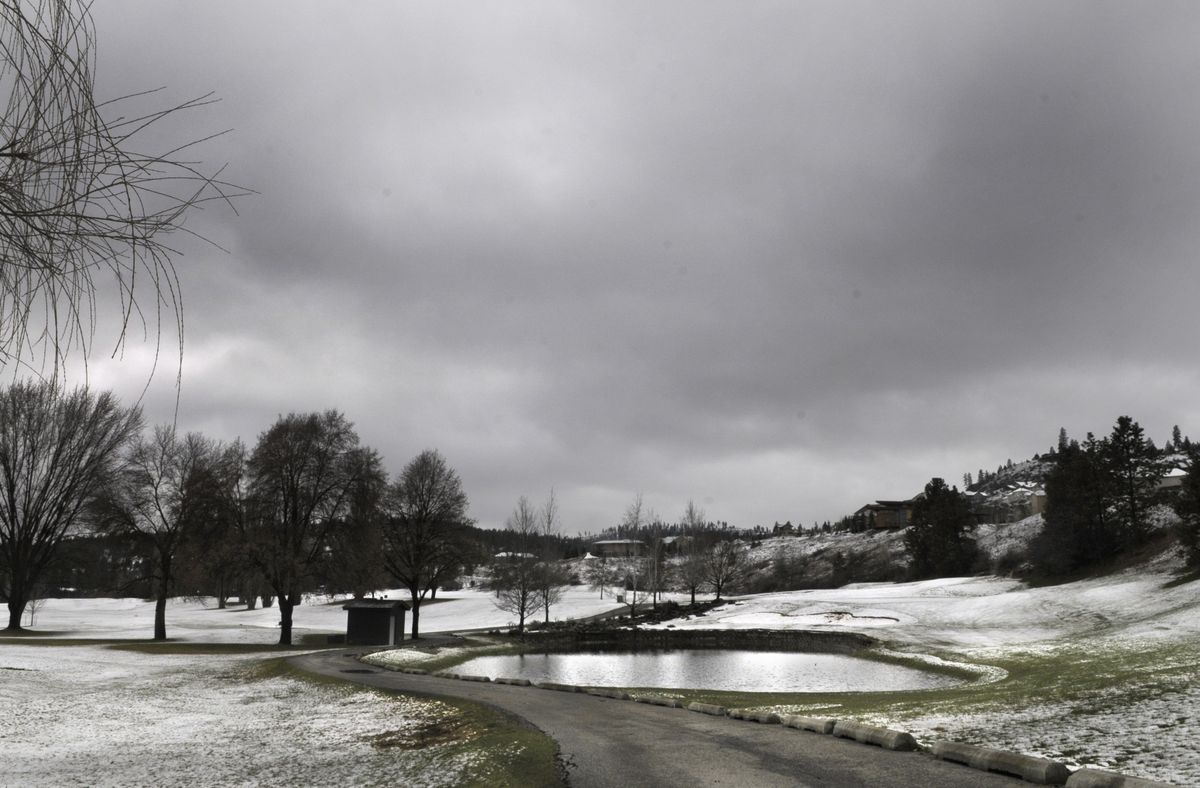Anxious for winter to go away
Heavy snow can be solved, but loss of golf days is big problem

As far as our local golf courses are concerned, the staggering amount of snow that ravaged our region this winter did more damage to their tills than it did to their turf.
Almost to a person, head professionals and maintenance superintendents claim the main problem caused by the record snowfall – which was at 97-plus inches last week – was the delay it caused in the opening of most courses.
Esmeralda Golf Course, the busiest of Spokane’s four city owned courses and usually the first to open each spring, did not open until March 26.
“Which is the latest date ever for us, by four full days,” said head professional Rex Schultz.
Prairie Falls Golf Course in Post Falls opened almost a week earlier than Esmeralda, but has been forced to shut down intermittently because of continuing snow and cold.
“We were a little later getting open than last year,” said Prairie Falls’ director of golf, Tim Morton. “We still had some snow around some the fairways when we did, and we were handpicking balls out of the snow on our range for the first time ever.
“It looks like the course came through the winter pretty well. It’s still wet in some spots, and we had a little bit of snow mold, but there were no problems that a little sunshine couldn’t cure. The biggest problem is that we’ve only had one or two days, so far, where we’ve been able to stay open all day, and our rounds for March were down even from last March, which was miserable.”
Aside from the financial woes caused the record-breaking winter snows, some courses also suffered some minor damage to trees and plants that succumbed to the weight of all the white stuff.
“We’ve had a few more broken branches on the ground than most years, and the course isn’t in the best shape it’s ever been coming out of winter,” Schultze said of his Esmeralda layout. “But it’s better than it was last year.”
Indian Canyon, another city owned course, opened its front nine holes earlier this month only to have them shut down by another dump of snow just a day later. The harsh winter caused the loss of some bushes, tree limbs and a little bit of turf, according to superintendent Don Nelson.
“Snow like we had can also do some damage to some of your plants,” Nelson added, “but other than that, having to delay the opening of the course is the biggest problem.”
Nearly every course in the region is dealing with snow mold, especially in the fairways that were not treated with fungicides last fall. But for the most part, greens that were treated and, in some cases – like Indian Canyon, for instance – covered with tarps, seem to have weathered the winter quite well.
“Most guys are pretty good about treating their greens and tees in the fall,” Nelson explained. “If you’ve got your application down right, the amount of snow you have during the winter months really doesn’t affect the grass that much.
“I know when we uncovered ours, they were in pretty good shape compared to some of the other courses I’ve played in Boise and Spokane this spring. The only snow mold we had was where we missed with the (fungicide) spray.”
Brian Woster, the maintenance superintendent at Circling Raven Golf Club in Worley, Idaho, got a look at the turf at his course in late March – right before a light blanket of snow covered it once again – and was pleased with what he saw.
“When we melted off, we had a couple of fairways with some snow mold on them,” he said, “but all you need to do, in most cases, is rake those areas up real good and new grass will grow back in.”
Modern fungicides, Woster explained, have all but eliminated major snow mold problems, no matter how much snow accumulates over the winter.
“You treat your grass in the fall in anticipation of snow and hope you have enough fungicide down to last until it melts in the spring,” he said. “How long the snow stays is probably a bigger concern than how much of it you get, because after awhile the chemicals can lose their effectiveness.”
Woster added that an early thaw, followed by more snow that stays around, can also present problems, because some fungicides tend to photosynthesize in the sunlight and lose their effectiveness.
“In those cases, we just go back out and hit any trouble spots with another light application of chemicals,” he said. “That usually checks any lingering snow mold right in its tracks.”
With his course schedule to open this week, Woster and his Circling Raven staff are leaving much of the remaining work up to Mother Nature.
“The nature of our soil out there, with it being heavy clay, can be an issue,” he admitted, “because we drain a lot slower than most courses. When the snow melts and soaks in, the ground stays wet a lot longer.
“We’re still a little wet now, but with some warmer weather and a little bit of sunshine that shouldn’t last long.”